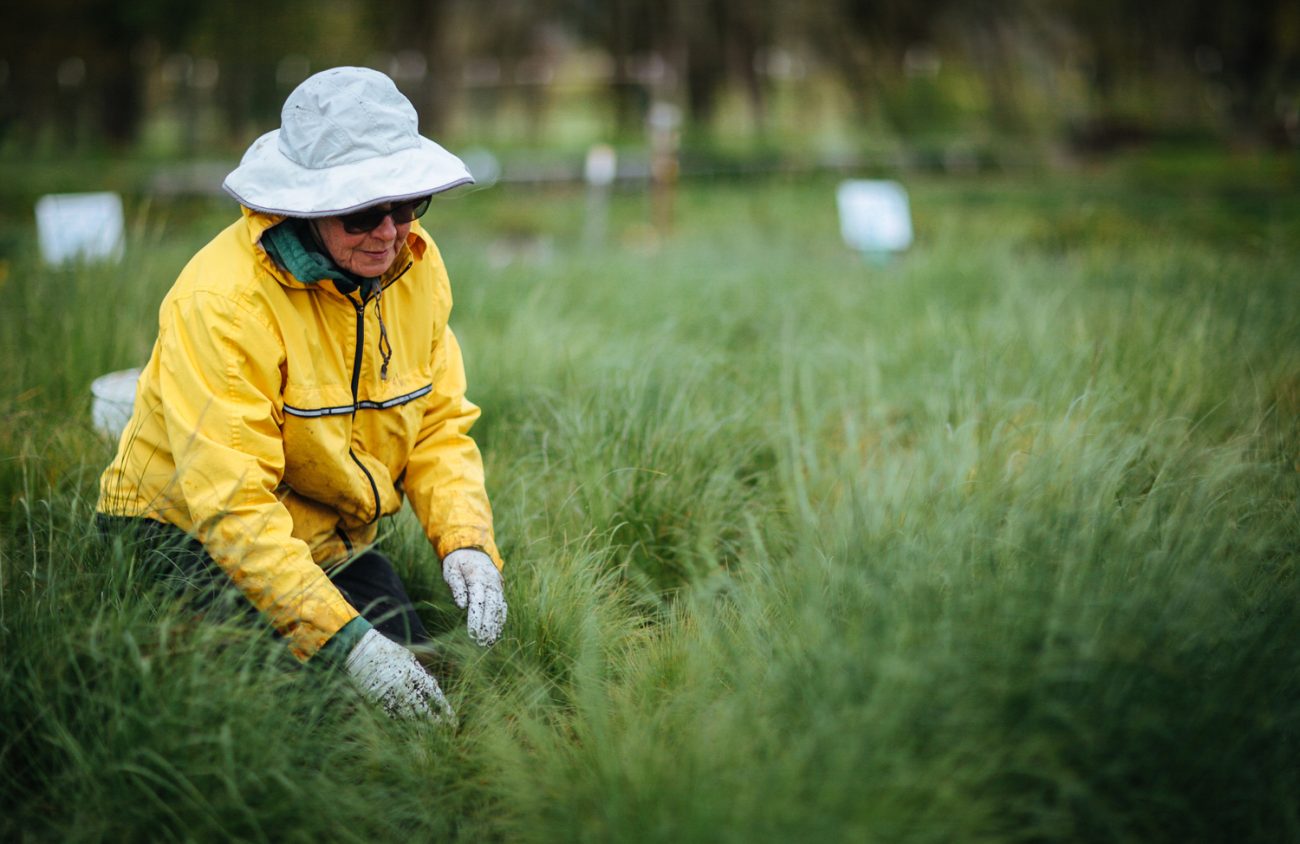Don’t miss a golden opportunity to pick up some locally sourced native plants while supporting the efforts of the Friends of Buford Park and Mount Pisgah: From 9 am to 1 pm on April 29, the Friends will hold their annual fundraising sale at the Buford Park Native Plant Nursery. I have had great success with plants I purchased at this sale in years past.
To reach the nursery, proceed as if you are visiting Mount Pisgah but, after you cross the river, turn immediately left as you enter the park. Continue past a parking lot on your left and through the open gate. Park outside the nursery.
The nursery is an impressive sight, especially in spring! Allow yourself time to look around the two-acre site, because by sale time many of the nursery beds will be full of flowers: delphinium, columbine, bleeding heart and many more should be in full bloom.
I visited toward the end of March, and Hal Hushbeck, the nursery manager, gave me a tour. Dozens of orderly beds were filled with burgeoning foliage. Swallows swooped above us while volunteers labored in the spring sunshine. (Yes, really. I lucked out.)
Hushbeck, who has worked at Buford Park since 2001, became crew leader for planting projects in 2004. In that capacity he helped build the fence and the first planting beds for this nursery, which was started in order to produce seed for the Nature Conservancy’s Turtle Flats restoration project. The large area of beds furthest from the road, beyond the office, greenhouse and outbuildings, was added later, coming under cultivation in 2013.
All the plants in the nursery beds are raised in the greenhouse from seed wild-collected within 15 miles of Mount Pisgah, from plants growing outside the nursery fences. Self-sown plants that occur within the beds are mostly weeded out. That ensures the offspring from collected seed won’t be adapted to nursery conditions.
Seed produced in the nursery beds is collected, cleaned and carefully stored on site to be broadcast on restoration areas here at Buford Park and elsewhere within the watershed. A small proportion of seed produced in the nursery is used to raise new plants in pots, both for the annual sale and for special planting projects.
The nursery grows 150 species, about half of which will be offered for sale as plants, mostly in 4-inch or gallon pots. It is unusual to find such a variety of natives offered in one place, and it’s a unique assortment, because they all grow within the park and adjacent areas.
That means, of course, that there are things you won’t find here. Never mind. You’ll find several shrubby species and plenty of perennial forbs: such favorites as Oregon iris, sidalcea, columbine and bleeding heart as well as many things less familiar. There are bulbous plants (camas, allium, triteleia) and an unusually good selection of annual forbs (clarkia, rosy plectritis, fragrant popcorn flower). You will also find an assortment of grasses, sedges and rushes, a group that other nurseries often neglect.
Growing natives in nursery conditions is no piece of cake. A good deal of ingenuity goes into keeping critters from raiding this cornucopia of roots and seeds, and also to make seed collection as efficient as possible.
Some beds have rodent-proof cages under them that go two feet down. Some have shade cloth barriers around them to corral exploding seed. Some also have shade cloth on the ground among the various plants, to deter self-sowing and so fallen seed can be vacuumed up as it accumulates.
There’s tons of work to do, and much of it is done by the volunteers who meet here all year round, on Tuesday and Thursday mornings and some Saturdays as well.
On the Tuesday of my visit, a half-dozen volunteers were working on a variety of projects. Some were weeding. One was flaming paths with a propane burner to destroy unwanted vegetation. John (“our botanist,” Hal called him) was transplanting tiny seedlings into 4-inch pots.
I met two people working on the new office building (actually a newly converted storage shed). Ellen was painting the interior a sunny yellow; Barry was hanging a new door.
If you’d like to join the volunteers, contact volunteer@bufordpark.org or 541-344-8350 for information. Or just show up. No experience necessary! Tools, gloves, snacks and instruction are provided.
